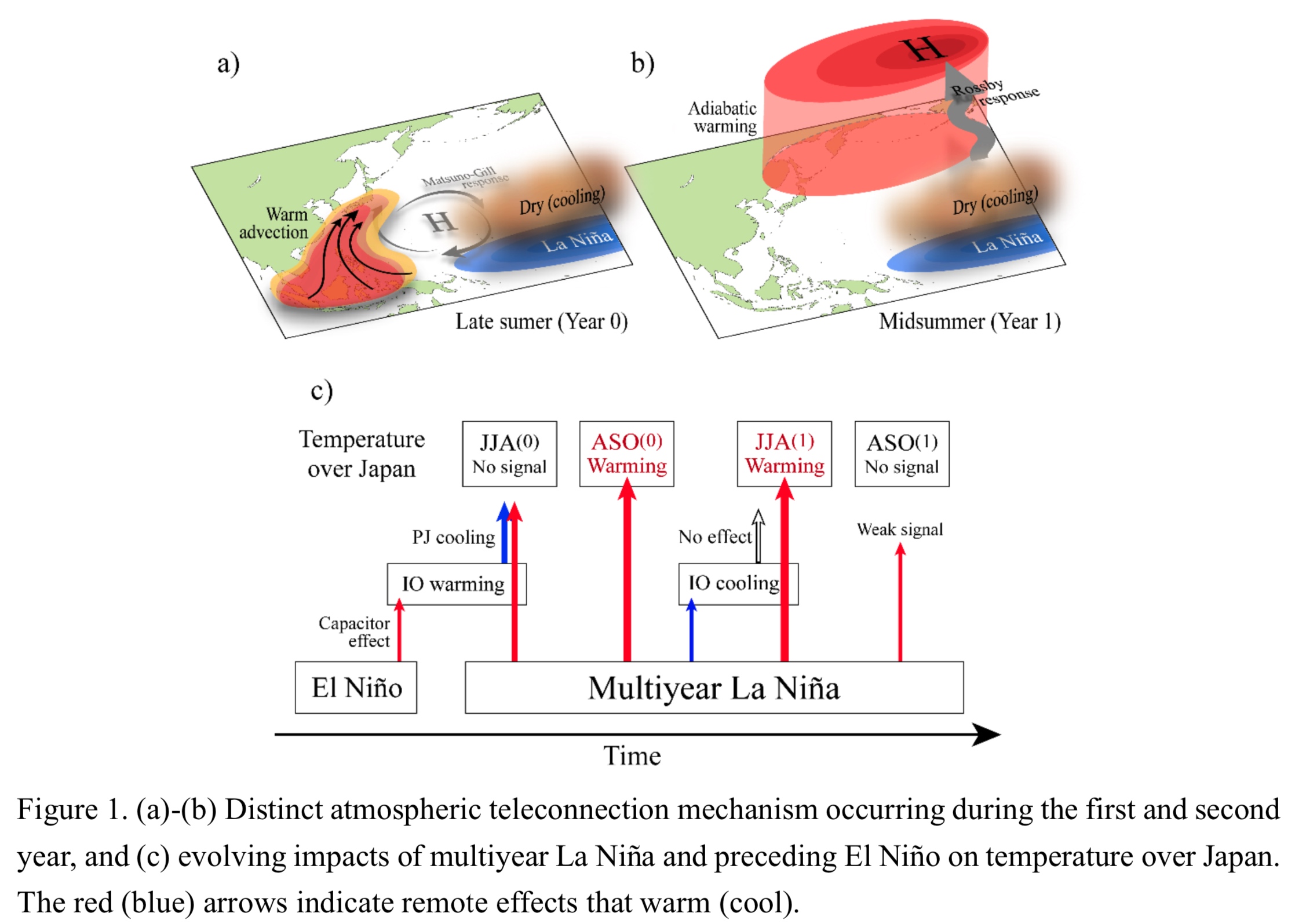Graphical Abstract
Iwakiri, T., and M. Watanabe, 2020: Multiyear La Niña impact on summer temperature over Japan. J. Meteor. Soc. Japan, 98, 1245–1260.
https://doi.org/10.2151/jmsj.2020-064
Early Online Release
Graphical Abstract with highlights
Plain Language Summary: La Niña event often occurs in two consecutive years and is known as multiyear La Niña. Two distinct mechanisms bring different type hot summer in Japan during multiyear event. First year tend to be warm over the southwestern Japan in late summer, while second year experiences hot conditions over the northeastern Japan in midsummer. Both mechanisms are excited by suppressing convective activity over the central and eastern equatorial Pacific.
Highlights:
- Warm conditions are found in August-October (June-August) in the southwestern (northeastern) part of Japan during first (second) summer.
- Two different mechanisms bring hot summer in Japan; Matsuno-Gill response induces southwesterly warm advection and midlatitude Rossby response induces barotropic high-pressure.
- Distinct teleconnection between two years can be explained by seasonal march of mean states and delayed effect of preceding El Niño.







